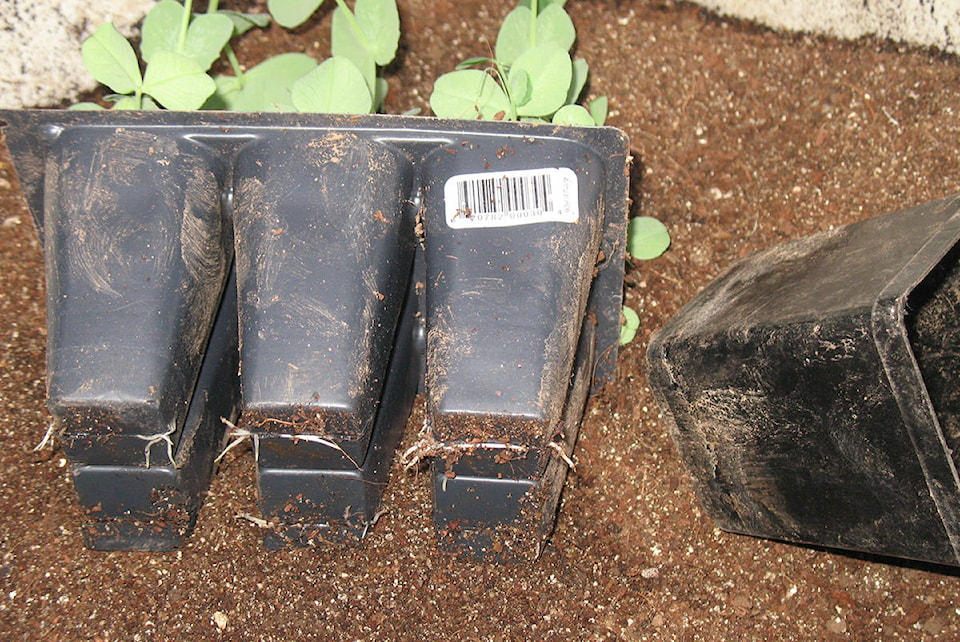By Mary Lowther
Last year I was planting out in the garden by early March, but this year I expect it will be the end of March before I can get out there. No matter, once those BTU’s that Ed Bain’s promised us start happening, micro-organism populations will explode and our plants will GROW, but check the soil before planting out because it takes time to thaw out. This may mean re-potting seedlings into even larger pots so they won’t get rootbound.
I check my pots every time I water them and when roots begin to show out the bottom holes, I re-pot. If I run out of larger pots I buy more. It’s worth paying for them rather than allowing plants to become root-bound and less likely to produce a crop.
If you’re buying seedlings, here are a few things to consider. Smaller, stocky plants indicate that they probably have not become root bound and were grown under strong light. Gently pop one out of the pot: the soil should be damp and not pulled away from the pot because any dryness during this stage can permanently halt production, no matter how well you subsequently treat the plant. Roots should not be winding around inside the pot or stick out beyond the holes of the pot because this, too, can halt growth.
When you bring your seedlings home, isolate them from your other plants in case they harbour disease or insects that could contaminate your other plants. Harden them off gradually to the elements outside by keeping them indoors at night and moving them to a shady spot during the day. After a few days, move them into a sunnier spot during the day, and a few days later, into full sun. After about two weeks, it should be safe enough to plant them into the garden.
I harden off most of my own seedlings this way too, and cover the trays with spun cloth cover in an attempt at keeping out cabbage moth, wood bugs and slugs. Each time I water I also lift up each pot to check for slugs hiding underneath. They like to get away from the sun and curl up at the bottoms of the pots.
It is better to buy the seedlings now while they’re still small and re-pot them yourself at home than wait until the soil is ready to buy them because by then they may have become root bound at the store.
When you bring your seedlings home and re-pot them, feed them a dilute solution of liquid fish fertilizer to keep them growing and encourage leaf development.
Events:
A Spring Faire of Plants, Workshops and Vendors on May 11 from 9 a.m. to 2 p.m., at Providence Farm, 1843 Tzouhalem Rd., Duncan.
Please contact mary_lowther@yahoo.ca with questions and suggestions since I need all the help I can get.
